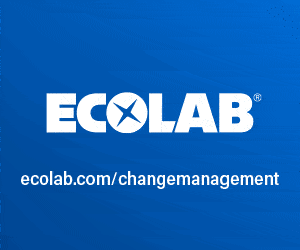One of the pillars of standards for the pharmaceutical industry is the United States Pharmacopeia. So where did the USP originate and what is the future of this organisation?
Where Did Pharmacopeias Originate?
The roots of pharmacopeias actually extend all the way back to the 15th century. Lodvice dal Pozzo Toschanelli was a physician in Florence, Italy. He made a “little book of drug formulas” for local pharmacists, who wanted information on quality standards for drug therapies. This little book would, of course, go on to set the standards for worldwide public health in a few centuries – and beyond.
In the early years of America, Toschanell’s original idea looked a little different. It had morphed into a wide range of “drug books,” with confusingly different standards. Thus, in 1820, several physicians formed a group based on their concern surrounding the quality and consistency of medicines following these wide variations of drug books. This group went on to publish the first USP, containing formulas for 217 drugs. These drugs were supposedly the best understood and established at the time of publication.
68 years later, in 1888, the American Pharmaceutical Association would found the National Formulary (NF), which was similar to the USP and published both formulations and unofficially preparation instructions for a wide range of commonly sold products.
While these bodies of standards were in existence, they were not enforced by any regulatory body until 1906 with the passage of the Federal Food and Drugs Act. This act allowed the USP and NF standards to be enforced as evidence that drugs were unadulterated according to federal law.
The Federal Food, Drug, and Cosmetic Act of 1938 would expand the roles of USP and NF standards to include misrepresenting a product through nonproprietary naming.
Together, the USP and NF provided solid guidance for the pharmaceutical industry. In 1975, USP bought out NF and combined the publications into one: the United States Pharmacopeia – National Formulary (USP-NF).
In 2006, USP bought out the Food Chemicals Code (FCC), which is a book for quality standards for food ingredients like flavorings, stabilisers, and colorings. Currently, the FCC does not have the same federal consideration as the USP-NF, but it is still used as a reference point for manufacturers to ensure they are using quality ingredients and following general best practices.
What Are Pharmacopeias Used For?
The intent of the USP is “to build trust where it matters most: in the world’s medicines, dietary supplements and foods.” They accomplish this by working “closely with government agencies, ministries, and regulatory authorities around the world to help provide standards of identity, strength, quality, and purity that can help safeguard the global supply of medicines, dietary supplements, and food ingredients.”
Now, the USP-NF has over 6,800 monographs for both over-the-counter and prescription products, medical devices, supplements, and other healthcare related products. The USP-NF is revised and re-published every year. To keep up with the times, it is no longer available solely as a little book, but instead is online, flash drives, and in print. There is currently a Spanish translation, too, and they are working on additional languages.
USP was established by volunteer physicians intent on improving the quality of care provided to patients and it continues to run on those principles. They rely on volunteers who donate their time to the Council of Experts and various Expert Committees and Panels to improve the USP-NF. They are dedicated to an open and transparent process.
This process results in science-based standards that are relied upon all throughout the world. These standards apply to medicines, food ingredients, and dietary supplements. USP also works to promote the application and use of these standards through a wide range of activities, such as public safety initiatives, verification programs, educational programs, and global assistance initiatives.
What is The Future Of USP and the USP-NF?
Having been in action for just around 200 years, the USP is no stranger to innovation and change. They are dedicated to continuously improving and exploring new technologies, as well as considering the implications these advancements can have on quality standards.
USP is working with a diverse array of organisations, academics, and researchers to envision the future of quality in medicine. One example is batch manufacturing.
While many pharmaceutical manufacturers are adopting continuous manufacturing as a means towards more flexibility and efficiency, USP is examining the ways the technology to meet these needs might have on the pharmaceuticals. To do this, they launched the Pharmaceutical Continuous Manufacturing (PCM) Initiative.
Another example they give is exploring new technologies in medicine that are taking the place of medication for certain conditions, like attention deficit hyperactivity (ADHD) and substance dependency. To achieve positive outcomes, a patient will use an app instead of taking medication. The FDA has approved several of these therapies for a wide range of chronic conditions.
The USP worked with the Digital Therapeutics Alliance to host a roundtable discussion with experts and leading companies in the field. This conversation lends itself to exploring how quality standards can be applied to maintain integrity.
This is a host of exciting, new technologies which will make pharmaceutical manufacturers’ lives easier and more fulfilling, but how can you stay up to date with all the inevitable legislative and regulatory changes, as well as best practices?
We have a simple answer for you: join our Knowledge Center. This is a compilation of our experience working with experts across the world in cleanrooms and the corresponding industries. We now publish regular blog posts, white papers, videos, and webinars where we break down difficult topics into easy-to-understand content.
This is the best way to keep up with changes and best practices – and it is free!





